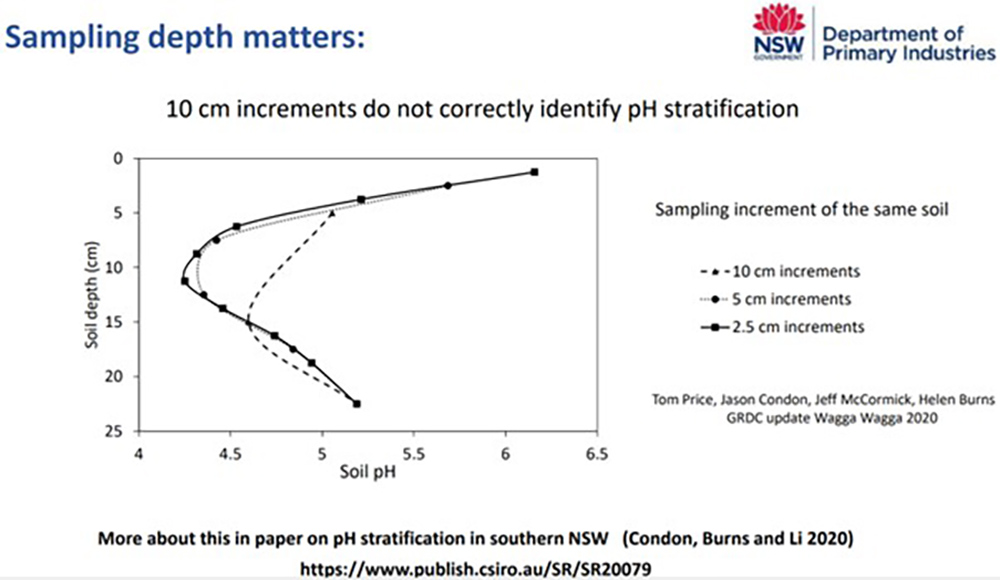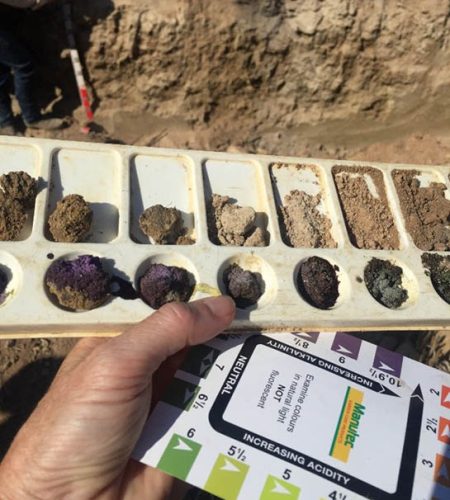This fact sheet supports the ‘Effective acid soil management’ presentation by Dr Jason Condon from Charles Sturt University. In this presentation, Dr Condon challenges the conventional methods of soil acidity measurement as well as current management approaches to lime application. He outlines research conducted in collaboration with Soil CRC Community of Practice participant organisations Central West Farming Systems, Holbrook Landcare Network and FarmLink
Watch the presentation on the Gecko Clan Landcare Network YouTube channel
The presentation was delivered in June 2023 at the ‘Innovations in Soil Science – Professional Development for Soil Scientists and Agronomists’ event hosted by the Gecko Clan Landcare Network and Soil Sciences Australia.
Highlights
Soil acidity (pH less than 5.8 topsoil and 4.8 subsoil) may reduce plant growth caused by nutrient imbalances and toxicities, impacting root growth, nodulation, and overall plant health.
Incorporating lime into the soil at a target pH of 5.8 can effectively address acidity and maximize crop potential.
Actively addressing acidity early on can lead to better root growth and plant performance, reducing the need for excess nitrogen use.
Incorporation of lime, once in a generation, can create a long-term solution to acidity and reduce the need for frequent cultivation.
Tissue testing for molybdenum levels and avoiding its use in conjunction with lime application can prevent toxicity and yield loss.
Proper incorporation machinery and an overall soil management strategy is critical to address acidity without causing soil compaction.
Sampling at five-centimetre intervals provides crucial information for making precise lime application recommendations (watch Holbrook Landcare’s ‘how to’ videos: Accurate soil sampling to 20cm in 5cm intervals and A rapid check for subsurface acidity in the field).
Cultivation for lime incorporation can create a win for plant growth but may lead to new challenges, such as soil compaction, requiring careful management.
Proper lime management in good soils is essential to maintain soil health and prevent unforeseen issues.


